
Which two conclusions for traffic that matches the traffic shaper are true? (Choose two.)
The SD-WAN overlay template helps to prepare SD-WAN deployments. To complete the tasks performed by the SD-WAN overlay template, the administrator must perform some post-run tasks. What are three mandatory post-run tasks that must be performed? (Choose three.)
Which two statements about SD-WAN central management are true? (Choose two.)
Which CLI command do you use to perform real-time troubleshooting for ADVPN negotiation?
Refer to the exhibit.
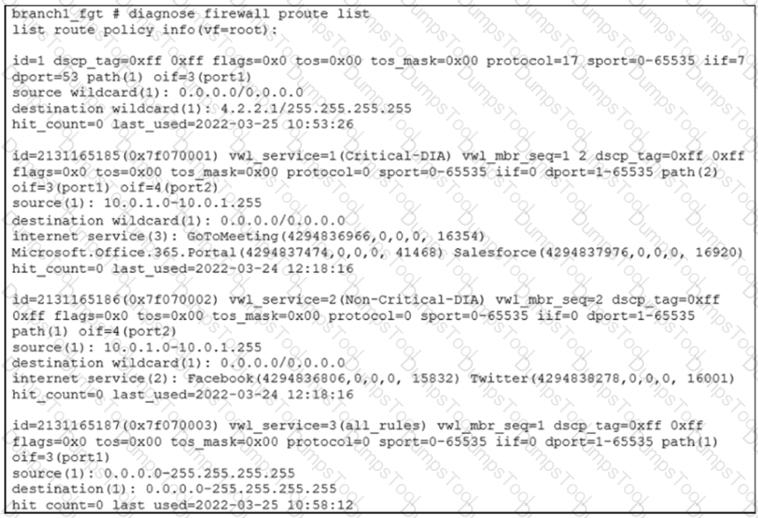
Based on the output, which two conclusions are true? (Choose two.)
Which two statements describe how IPsec phase 1 main mode id different from aggressive mode when performing IKE negotiation? (Choose two.)
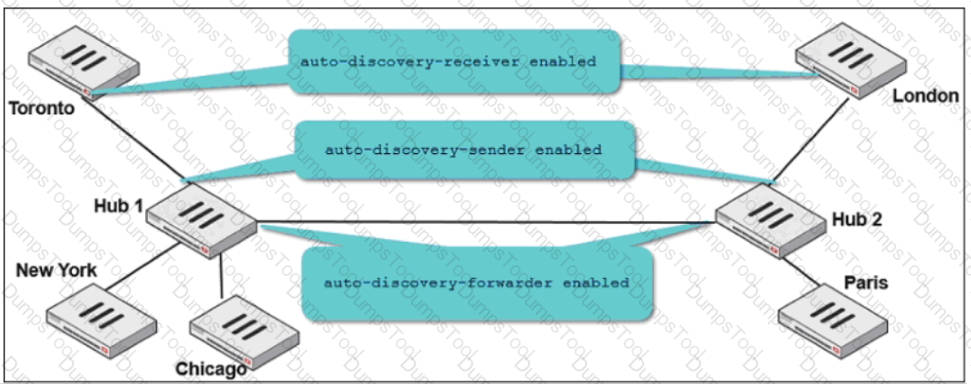
Two hub-and-spoke groups are connected through a site-to-site IPsec VPN between Hub 1 and Hub 2. The administrator configured ADVPN on both hub-and-spoke groups.
Which two outcomes are expected if a user in Toronto sends traffic to London? (Choose two.)
Refer to the exhibit.
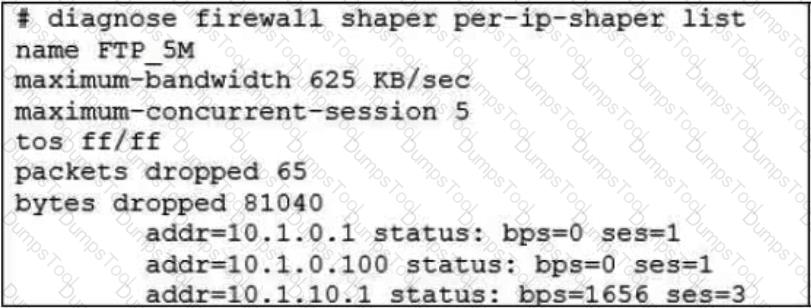
Which are two expected behaviors of the traffic that matches the traffic shaper? (Choose two.)
Refer to the exhibits.
Exhibit A
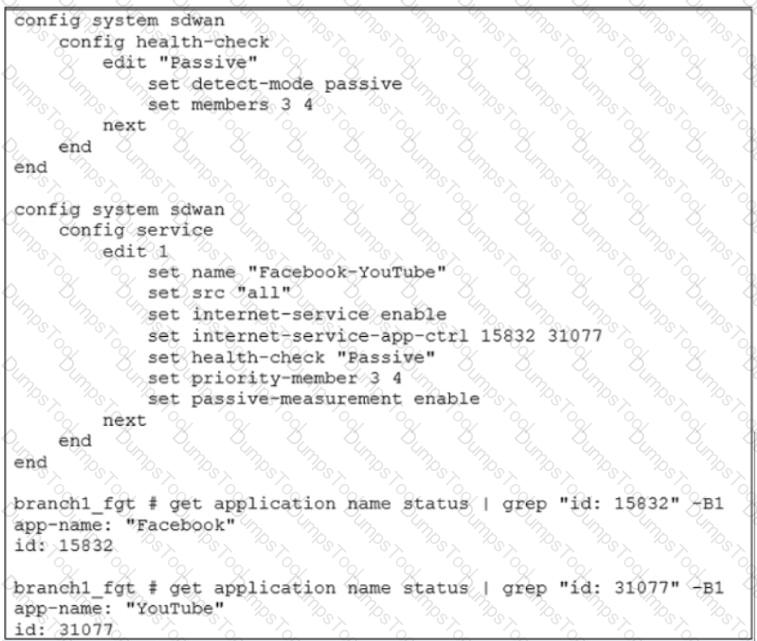
Exhibit B
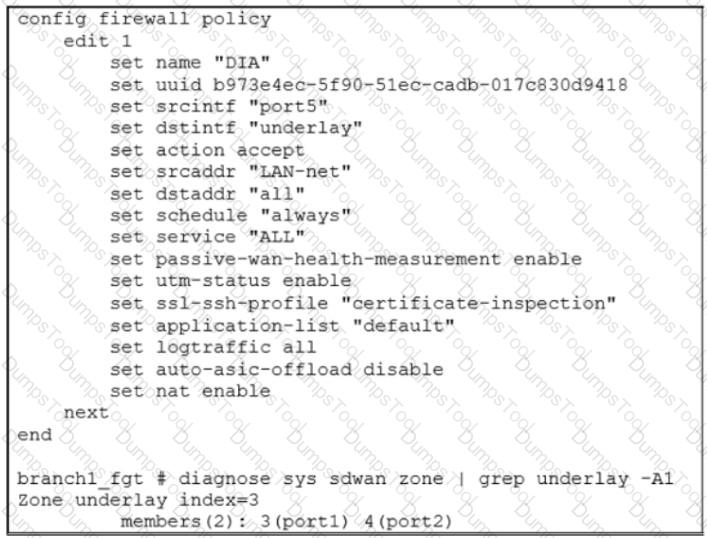
Exhibit A shows the SD-WAN performance SLA configuration, the SD-WAN rule configuration, and the application IDs of Facebook and YouTube. Exhibit B shows the firewall policy configuration and the underlay zone status.
Based on the exhibits, which two statements are correct about the health and performance of port1 and port2? (Choose two.)
Which two statements about the SD-WAN zone configuration are true? (Choose two.)
Refer to the exhibit, which shows an SD-WAN zone configuration on the FortiGate GUI.
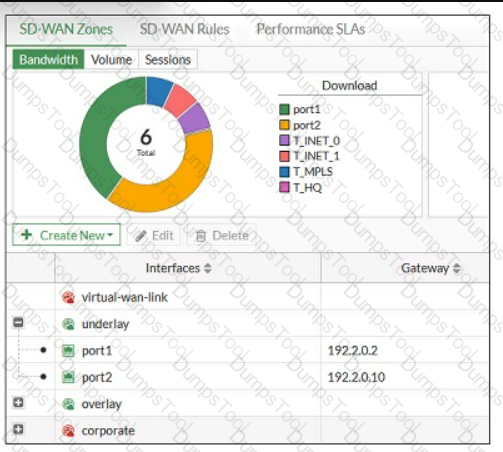
Based on the exhibit, which statement is true?
Refer to the exhibit.
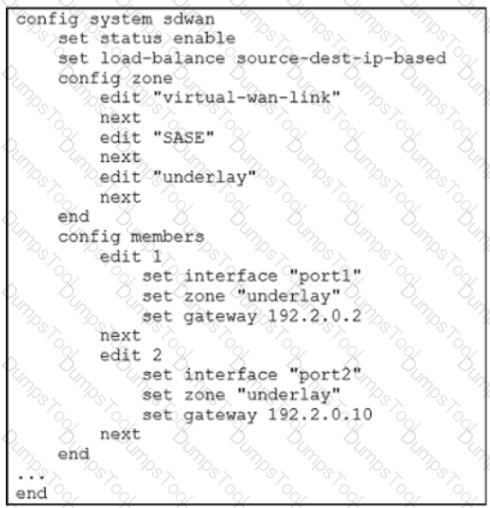
Which algorithm does SD-WAN use to distribute traffic that does not match any of the SD-WAN rules?
Refer to the exhibit.
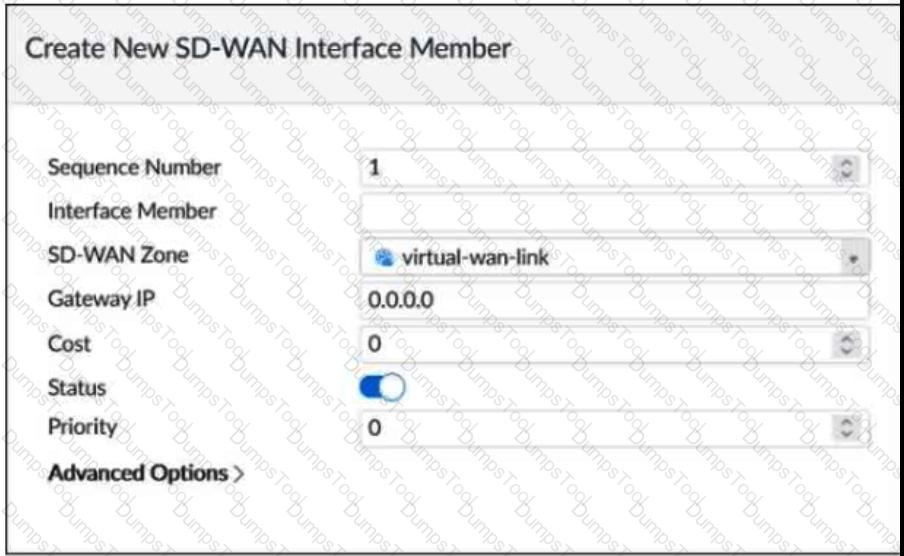
Which two SD-WAN template member settings support the use of FortiManager meta fields? (Choose two.)
Refer to the exhibit.
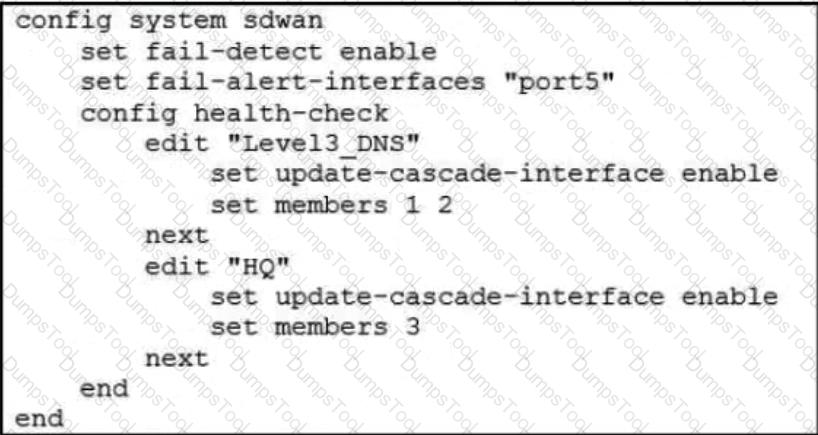
Based on the exhibit, which action does FortiGate take?
Refer to the exhibit.
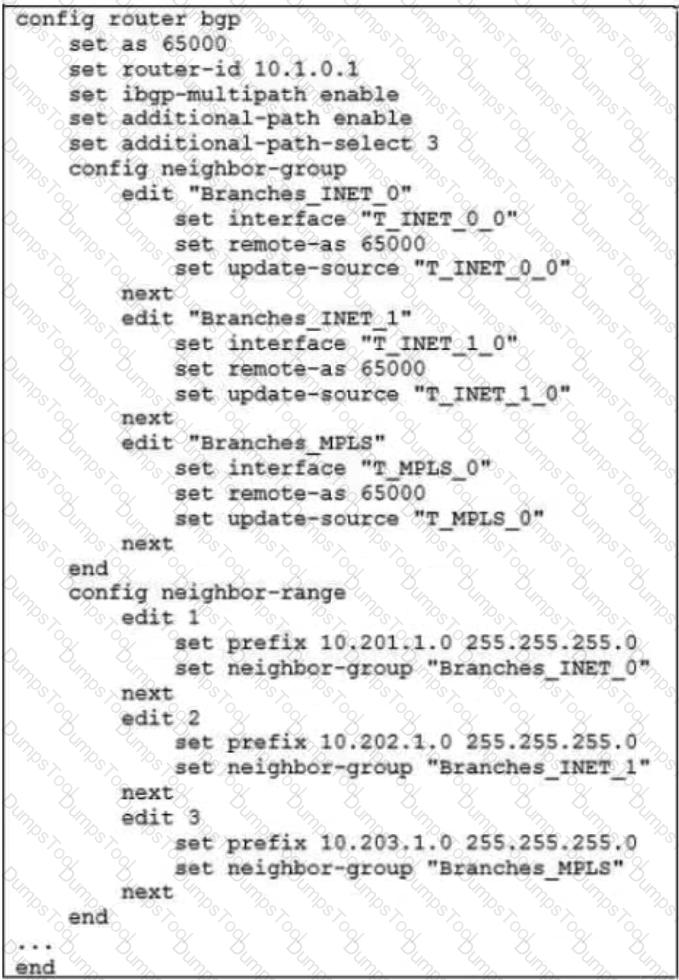
The exhibit shows the BGP configuration on the hub in a hub-and-spoke topology. The administrator wants BGP to advertise prefixes from spokes to other spokes over the IPsec overlays, including additional paths. However, when looking at the spoke routing table, the administrator does not see the prefixes from other spokes and the additional paths.
Based on the exhibit, which three settings must the administrator configure inside each BGP neighbor group so spokes can learn other spokes prefixes and their additional paths? (Choose three.)
Refer to the exhibit.

Which configuration change is required if the responder FortiGate uses a dynamic routing protocol to exchange routes over IPsec?
In a hub-and-spoke topology, what are two advantages of enabling ADVPN on the IPsec overlays? (Choose two.)
Refer to the exhibit.
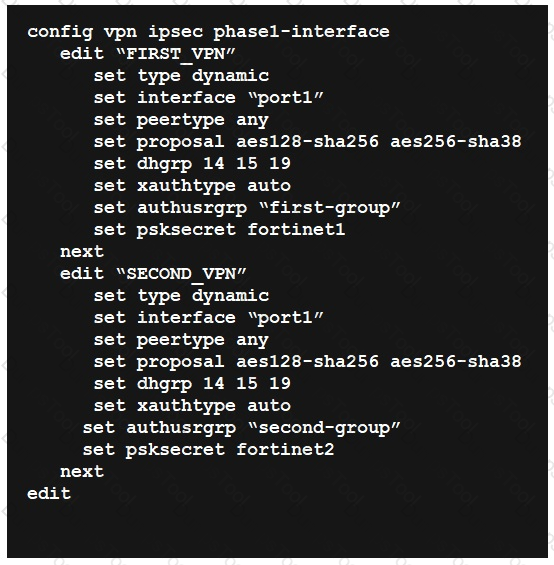
FortiGate has multiple dial-up VPN interfaces incoming on port1 that match only FIRST_VPN.
Which two configuration changes must be made to both IPsec VPN interfaces to allow incoming connections to match all possible IPsec dial-up interfaces? (Choose two.)